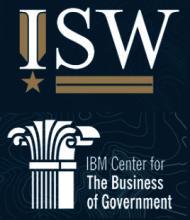
Envisioning the Information Domain: Perspectives from the Pacific

Blog Co-Authors: Kimberly Kagan, founder and president of the Institute for the Study of War; Frederick W. Kagan, senior fellow and director of the Critical Threats Project at American Enterprise Institute; Brian Babcock-Lumish, director of the General David H. Petraeus Center for Emerging Leaders at the Institute for the Study of War.
This post reflects the third roundtable discussion held in Honolulu with a focus on the Indo-Pacfic region in January (see summaries from the first and second roundtables. More detail on how these issues impact activity among the US, allies, and adversary states in the Indo-Pacific can be found at this post from ISW.
This third event convened global leaders from the military, government, academia, and technology sectors to consider how to visualize the information domain, drawing on the context of competing information operations in the Indo-Pacific.
The third event in the series addressed these questions:
- How can we best visualize the interactions between both sets of information operations and major political events on the ground across the Pacific region?
- How can we best conceptualize and visualize the interwoven information operations?
- How can we best visualize the interactions between those information operations and the counter-information operations conducted by the US and its allies?
- What are the greatest needs of the United States, allies, and partners in confronting information operations?
- How can we visualize adversaries’ use of platforms in the US and allied countries in support of adversary information operations?
- What are the lessons learned from the answers to the above questions, and what is the best way to visualize information operations alongside other domains of warfare to support effective and efficient decision-making?
The challenge presented at the outset of the roundtable involved how to build trusted decision-making across domains – the five traditional domains (air, sea, land, space, and cyber) and the information domain, working from the premise that information can be viewed as a sixth domain of warfare. Multiple adversaries have been using IO to shape Western perceptions for decades, re-baselining perceptions.
To the fundamental question of visualizing competing IO interactions, participants noted that the visualizations need to reflect multidomain operations and not just informational activity, and need reflect the interactions of friendly and adversary activity. There was general agreement that the visualizations need to be adaptable and tailored to multiple audiences, including analysts and decisionmakers, as well as even public visualization for broader release.
The group discussed how visualizations should involve a suite of solutions for multiple echelons, able to zoom in and out both functionally and geographically. This allows for staffs to monitor the day-to-day activities in the information domain, but also to develop a narrative about information operations and to elevate activity to a policymaker or commander to inform their decision-making. Indeed, a strategic policymaker’s actions or statements can operate at the tactical level, such as when the Biden administration declassified indicators and warnings of the Russian invasion of Ukraine, and President Biden himself (and senior proxies) communicated them in public and in private to both domestic and international audiences.
Participants highlighted several challenges in visualizing the information domain.
- First, implicit assumptions in any visualization need to be made explicit, with an understanding of differences between uncertainty and risk.
- Second, any visualization must both identify narratives about information operations, and show alignment or misalignment between a narrative and the desired actions that can follow from it.
- Third, geopolitics can play complex roles in any effort to visualize information.
- Fourth, available data can impact perceptions about visulizations. The group shared concerns about visualizations falling into the McNamara fallacy, focusing solely on what is quantifiable. As an example, numerous efforts to visualize Twitter data have come at the exclusion of other data streams, largely because Twitter brings vast amounts of readily-available, quantifiable data.
- Fifth, attempts to visualize complex informational components need to account for both offline and online data. Some digital environments, such as closed chat networks, are effectively offline, including restricted Telegram and Signal channels.
One metaphor that resonated with roundtable participants was the need to use forensic archaeology to understand past information operations, whether adversary or friendly. IO narratives are not single, discrete events, but enduring and subject to attack from an adversary over their lifetime. This can also involve awareness of when a narrative hops from one medium to another, whether linguistic or technical.
Several participants noted another challenge stemming from the complexity of both state and non-state actors in the information domain; both government and private sector actions and reactions exists in response to adversaries’ IO. This increases the complexity of assessing both fidelity of data and its usefulness, regardless of the origin.
A senior military participant recognized a challenge when decisionmakers hear advice to act but choose not to, as is their prerogative. Likewise, military headquarters are limited by their size to absorb the vast amount of information pouring in. There is thus a need for delegation downward to free decisionmakers to focus on longer-term issues, though there is also a tendency to centralize decision-making related to IO.
Particpants expressed a range of views about the role and relative importance of public affairs officers in information operations. Some view them as central to the topic, while others view them as having a more supporting role. This is emblematic of an enduring tension between the public affairs and information operations professions.
A robust discussion focused on structural differences between democracies and authoritarian regimes as it pertains to IO. An allied military participant highlighted that authoritarian regimes can be more effective at offensive IO without the constraints democracies have on domestic messaging. There was some optimism that authoritarian regimes’ disinformation might be effective in the short term, but that accurate information from democracies is more likely to win in the long term
The roundtable grappled with the fundamental question of inputs: what data does an analyst or decisionmaker need to know? And even more challenging, what data do commanders and policymakers need, but do not yet realize they need it? One suggested approach involves keep visualizations relatively simple and tied to effects, to convey a “so what” clearly. But the information domain is so inherently complex that visualizing it must address multiple actions for multiple audiences, with the ability to tailor the visualization to the relevant user. An alternative suggestion was to avoid introducing a new domain and frame visualizions on the already understood DIME approach: diplomatic, information, military, economic. Efforts to visualize the information domain might also draw from other disciplines, such as medicine or aviation. Another useful analogue is the way in which the insurance industry has created ways to view payout after failure vs. prevention before an incident.
Unlike how the private sector focuses on using social media to generate consumer purchases in the short term, IO in a geopolitical context is a multi-year endeavor. Dumping data after 90 days will not work when trying to understand how adversarial IO campaigns interact over time. This challenge is further compounded by the difficulty of modeling and visualizing open systems that evolve (unlike the immediacy of a social media platform like Twitter).
Another challenges involves varied backgrounds of senior policymakers and commanders, which affects how staffs need to support them in presenting information. Two-dimensional maps are commonly understood and thus have potential as a base layer for visualizing the information domain, but leaders and staffs will require training to use additional informational data layers displayed over a conventional map. One participant shared an anecdote of a commander who, when presented with a visualization, insisted on a simple pie chart for very complex data. A further challenge is the rapidly evolving nature of the information domain, such as the shifts from one social media platform to the next, and perhaps to the Metaverse in the future.
Activity in the information domain is not restricted to governments. There needs to be a collective conversation about what roles and responsibilities of different actors, whether as a matter or law, policy, or norm. Governments and partners need to correctly define the collective problem before moving on to possible solutions. This involves understanding the state of play between competing narratives, the state of the terrain in the cognitive domain, and other elements of information operations discussed above.
Experts participting in this third roundtable discussed additional specific ways that these issues impact and are impacted by the way that the Chinese government has operated over decades; for more detail on this issue, see the summary post from ISW. The Roundtable concluded that much work remains to be done in order to visualize the information domain for different audiences, from policymakers to commanders to staffs. In the coming months, ISW and the IBM Center for The Business of Government will conclude this series with a final report and a launch event to highlight findings and recommend next steps, including how to continue the dialogue and move toward actionable frameworks to visualize the information domain.



